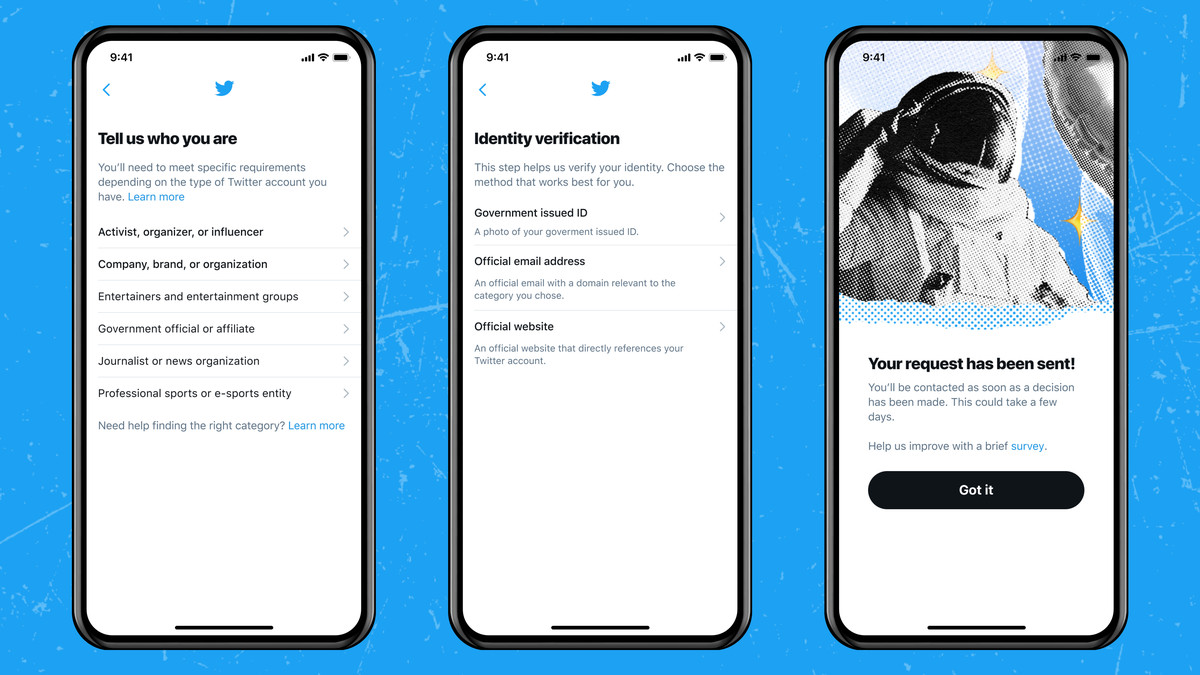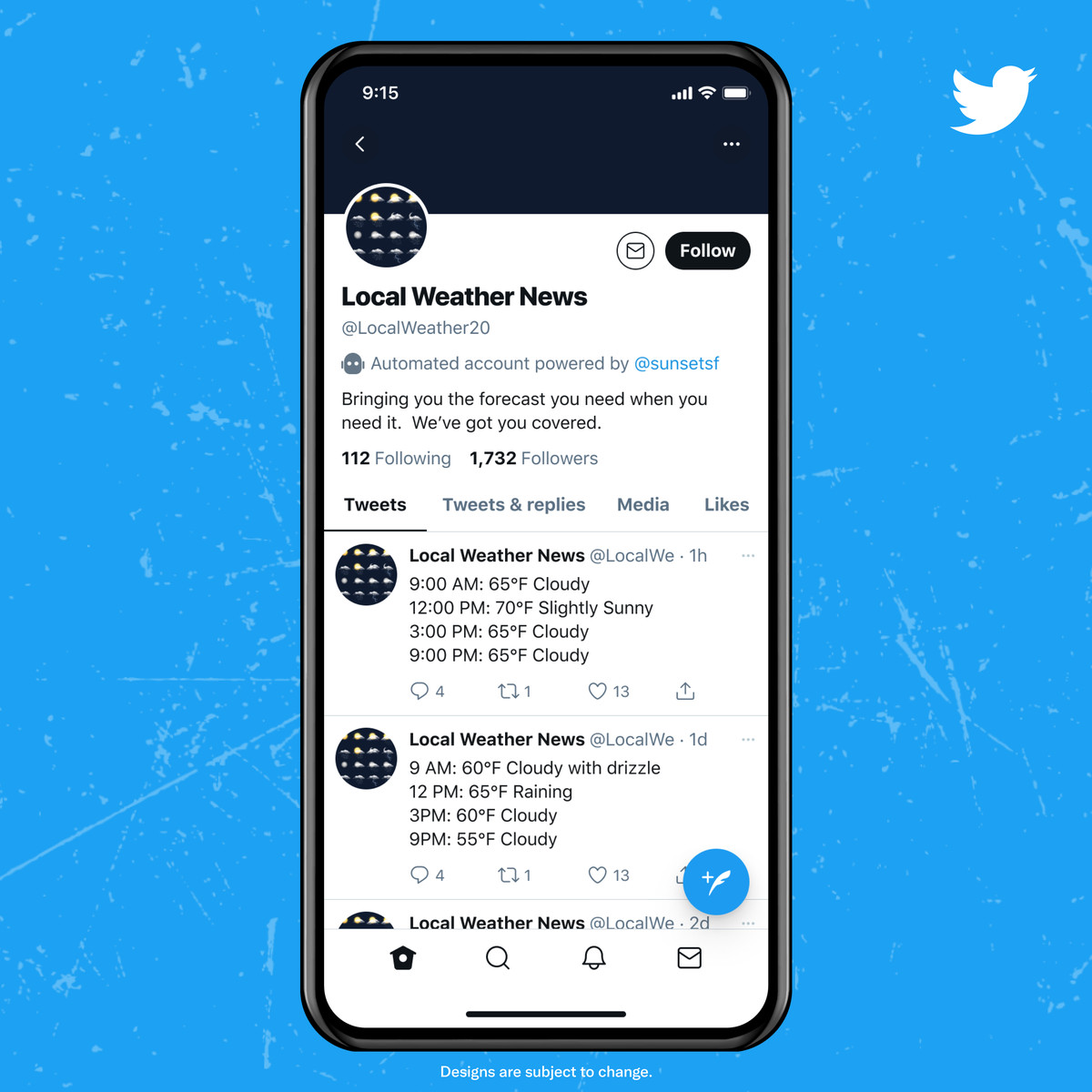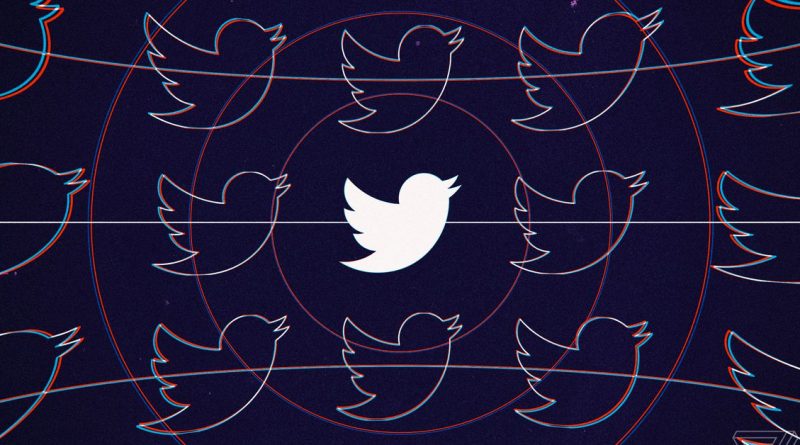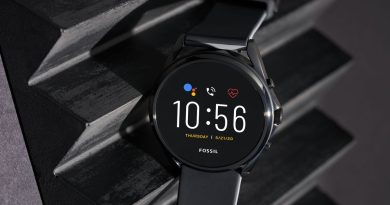Twitter is letting anyone apply for verification for the first time since 2017
Twitter is relaunching its public verification program, allowing anyone to apply for a coveted blue check mark. The company also previewed potential changes coming to profiles and the upcoming label for automated accounts.
To make the grade for verification, users will have to meet Twitter’s revamped verification criteria, which includes having an account of public interest that falls under one of six different types of categorizations as well as being “authentic, notable, and active.”
Here are the six categories of accounts that can qualify for verification:
- Government
- Companies, brands and organizations
- News organizations and journalists
- Entertainment
- Sports and gaming
- Activists, organizers, and other influential individuals
You’ll be able to apply for verification in the Account Settings tab at some point “over the next few weeks.” Once you’ve applied, Twitter says you can expect a response “within a few days,” but that timeline could open up to a few weeks depending on the volume of applications. All applications will be evaluated by humans, Twitter said in a briefing with journalists this week.

If you’re approved for verification, the blue checkmark badge will appear on your profile automatically. If Twitter doesn’t approve your application and you still think you qualify for verification, you can reapply within 30 days of the company’s decision. And if your account is already verified, you won’t need to reapply.
The return of Twitter’s public verification process has been a long time coming. The social network suspended the program in November 2017 after it was widely criticized for verifying the account of a white supremacist. At the time, the company admitted that the purpose of verification had become confused. It was originally meant as a way to authenticate an account’s identity (“Yes, this is really so and so”), but over time the badge came to be seen as something like an endorsement by Twitter itself. Basically, it was a mess.
The original verification program was launched by Twitter in 2009 as a way of verifying the identities of high-profile users “at risk of impersonation.” But the process for verification was obscure and there was no obvious way to apply. That changed when Twitter opened up its verification program to the public in 2016.
When the public application program was paused in 2017, Twitter attempted to clarify its rules about which accounts are eligible for verification. A new verification policy was introduced in January 2021 with the six categories of accounts listed above that are eligible for verification. As per the January 2021 rules, accounts must have a verified email address or phone number, a profile image, and a display name to be eligible. Accounts may also lose their badge for “severe or repeated violation[s]” of Twitter’s rules.
While the public verification program had been suspended, Twitter continued to manually verify certain accounts, like those publishing information about the pandemic or candidates running in the US’s 2020 elections. And as part of Thursday’s announcement, Twitter says it plans to add more categories of accounts that can be eligible for verification later this year, including scientists, academics, and religious leaders.
Alongside the new verification application, Twitter is also previewing changes it’s considering to profiles, including the addition of an About tab. The following image isn’t a final version of what these changes might look like, but they give you an idea of what Twitter is thinking about.

One thing that Twitter did confirm will be coming to profiles is a dedicated pronouns field, but there’s no timeline as to when that might happen. Twitter joins other platforms in adding a pronouns field, including Slack, which began rolling one out on Wednesday, and Instagram, which added one last week.
Twitter also previewed its upcoming label for automated (aka bot) accounts. Twitter plans to ship this label sometime in July, Twitter’s product lead for profiles and identity, B Byrne, said in this week’s briefing. You can see what it looks like in this image:

A previously-announced label to memorialize people who have died will arrive later this year.




